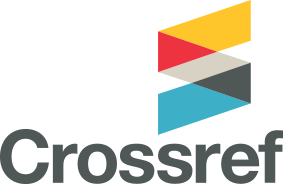EFFECT OF WHEAT POLLARD (Triticum aestivum) AND SOYBEAN MEAL (Glycine max) PROTECTED WITH CONDENSED TANNIN IN THE DIET ON FEED INTAKE AND DIGESTIBILITY OF LACTATION DAIRY COW
Abstract
The objectives of this study were to investigate the effect of wheat pollard (Triticum aestivum) and soybean meal (Glycine max) protected by condensed tannin (CT) on feed intake and organic matter digestibility of lactation Holstein-Friesian Crossbred cows. Twelfth lactation cows were divided into 4 groups based on the month of lactation and each group consist of 4 diet treatments which were supplemented by CT. The using of CT was 6% from total dry matter of wheat pollard and soybean meal depending on the feeding treatments. Feeding treatments consist of T1 : 65% corn leaves (Zea mays)+ 35% concentrate (control 0% CT); T2 : 65% corn leaves + 35% concentrate (soybean meal protected by 6% CT); T3 : 65% corn leaves + 35% concentrate (wheat pollard protected by 6% CT); T4 : 65% corn leaves + 35% concentrate (soybean meal and wheat pollard protected by 6% CT). Cows were allowed a week of adaptation period, 10 days of preliminary period and 30 days of data collection. Dietary supplemented by 6% CT did not affect feed intake and organic matter digestibility. These results suggest continuing the next experiment to determine the effect of CT on ruminant animals with higer level of CT and the other parameters.
Keywords : condensed tannin (CT), wheat pollard, soybean meal, feed intake, digestibility, lactation dairy cows
Refbacks
- There are currently no refbacks.

This work is licensed under a Creative Commons Attribution-NonCommercial 4.0 International License.










